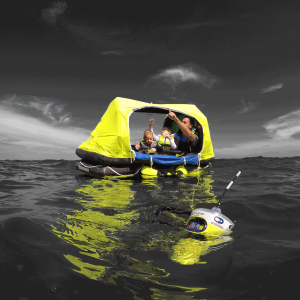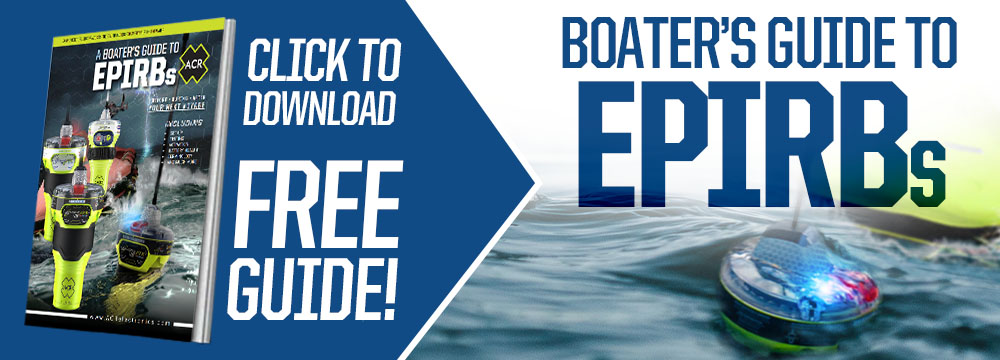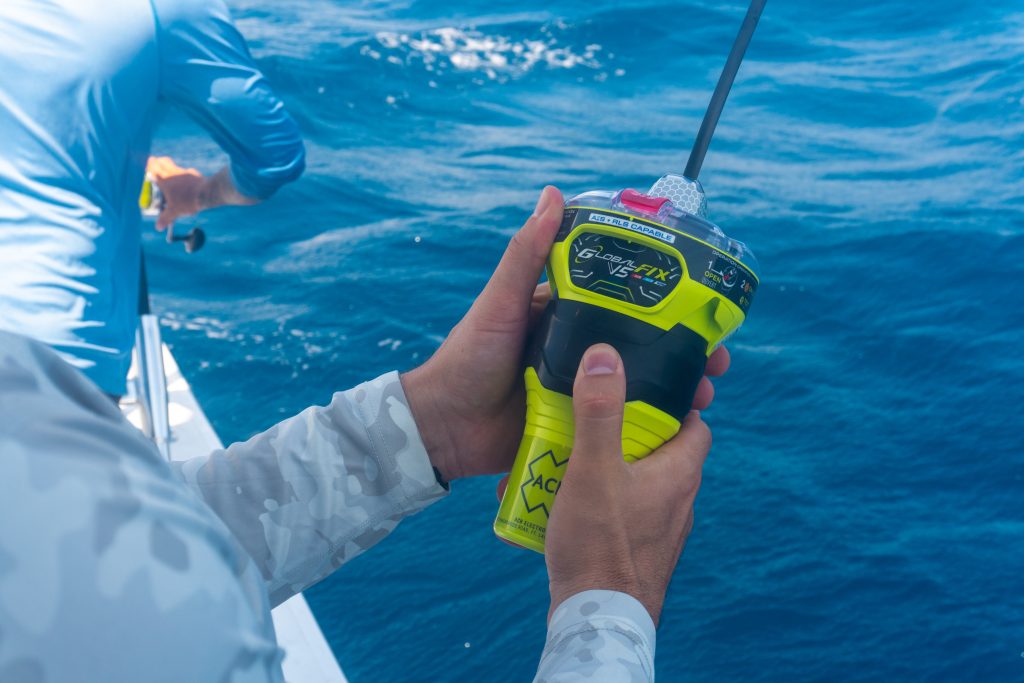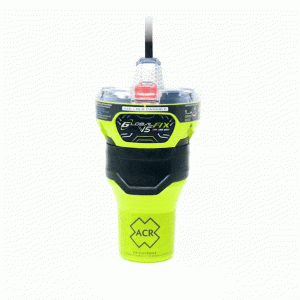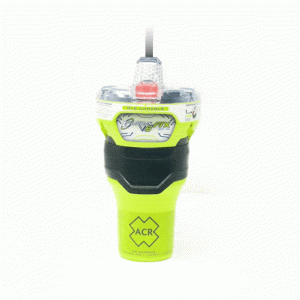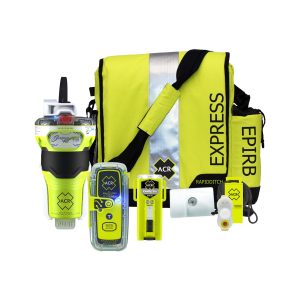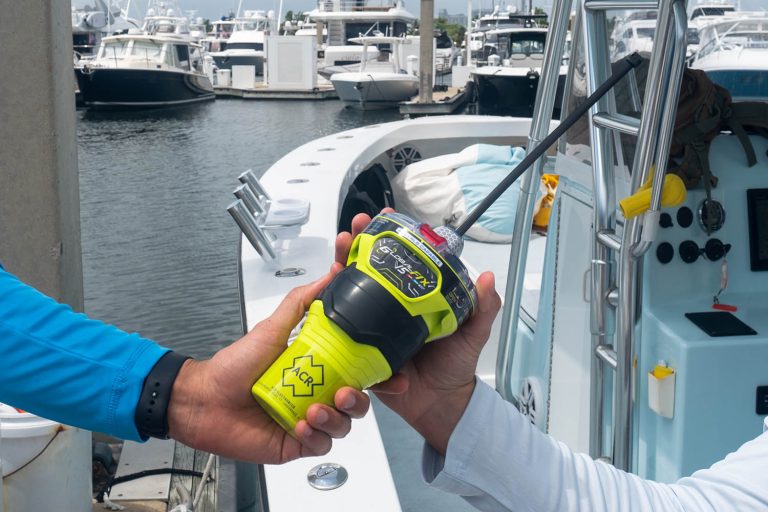 EPIRB
EPIRB
What Is An EPIRB or Emergency Position Indicating Radio Beacon?
Posted on March 13, 2023
Safe boating is everyone’s responsibility, and there is technology available to commercial and recreational boaters called an Emergency Position Indicating Radio Beacon or EPIRB to alert Search and Rescue teams of your exact location, should the unthinkable ever happen. Learn everything you need to know about EPIRBs including the new AIS EPIRBs and how they take the Search out of Search and Rescue.
What Does EPIRB Stand For?
EPIRB Stands for Emergency Position-Indicating Radio Beacon. You may also hear an EPIRB referred to as a GPIRB, this stands for an EPIRB that has an internal GNSS/GPS receiver to pinpoint your location faster.
What Is An EPIRB?
An EPIRB or Emergency Position Indicating Radio Beacon is a distress beacon for boaters that when activated alerts a worldwide Search and Rescue (SAR) network designed to send rescuers to your exact location quickly.
How Do EPIRBs Work?
EPIRBs transmit a digital 406 MHz distress signal that contains a unique 15-digit identifier to the Cospas-Sarsat Satellite System. Depending on where your vessel is registered this may be a serial number or the vessels MMSI (Maritime Mobile Service Identity) number.
For EPIRBs with a serial number, Search and Rescue forces then pull up your beacon registration (also free, yet mandatory for all EPIRB owners) which tells them who the beacon belongs to as well as provides additional emergency contact information. For EPIRBs with an MMSI number the EPIRB 15 Hex ID should be added to the relevant maritime database.
EPIRBs provide Search and Rescue forces with your location either via GPS data or via triangulation calculations from the satellites. This positional data is provided to the Rescue Coordination Center closest to your location. They in turn embark on your rescue mission and use the EPIRBs 121.5 MHz homing signal, AIS location signal on newer EPIRBs, and strobe lights to ultimately pinpoint your location and bring you home safely.
Newly Approved EPIRBs with AIS
With AIS technology designed into some newly approved EPIRBs, when an EPIRB with AIS is activated, the AIS signal is sent nearby vessels outfitted with an AIS transponder who are then instantly notified of the EPIRB distress and location. Vessels in the area where the EPIRB has been activated can then start rescue and recovery operations immediately without having to wait for emergency response from the applicable Search and Rescue authority. AIS also allows local responders to easily pinpoint the EPIRB’s location which is presented as an AIS target on their onboard display. Nearby vessels with onboard AIS can navigate directly to the EPIRB by selecting the AIS target. This incredible technological advancement will speed recovery times which is sure to save lives.
For more information on how an EPIRB, Personal Locator Beacon, or Emergency Locator Transmitter rescues work, check out our article here.
Key Point: The Cospas – Sarsat Satellite System
The Cospas – Sarsat Satellite System is an international satellite radiolocation system to support search and rescue operations for aviators, mariners, and land travelers in distress.
The Cospas – Sarsat Satellite System is supported by local governments so there are no subscription fees.
- Worldwide – Over 63,000+ people rescued (since 1982)
- United States – 11,000 people rescued (since 1982)
What Are The Advantages To An AIS EPIRB?
The main two advantages of switching to an AIS EPIRB are (1) reducing the search radius of your distress to 10 meters, and (2) the ability to send an emergency alert to all AIS equipped vessels in VHF range. Both of these features will aid in saving more boaters lives each year.
What Is Return Link Service or RLS in EPIRBs?
Return Link Service (RLS) is a new enhancement to RLS enabled EPIRBs that provides a blue flashing LED light that is a visual confirmation message from Search and Rescue that they have received your emergency distress message. A Return Link Service signal sent back through the Galileo satellite network confirms that the distress message along with the precise beacon location and identifiers have been detected. The comfort of knowing rescuers are aware that an EPIRB has been activated and that they have its location helps reduce the stress associated with mayday situations.
Learn more about Return Link Service
When Should You Activate An EPIRB?
You should only activate an EPIRB when you are grave and imminent danger. When the loss of life, limb, or valuable property is likely without emergency assistance. From a sinking vessel, to a medical emergency onboard while you are out at sea, an EPIRB is a critical piece of your boats safety gear to get you rescued quickly.
How To Use An EPIRB In A Marine Distress Emergency?
EPIRBs can be deployed manually or automatically depending on the bracket category and situation.
An automatic Float Free Category 1 bracket is designed to release an EPIRB when the Hydrostatic Release Unit (HRU) in the bracket is submerged in water to a depth of 4 to 14 feet (1.5 – 4 meters).
The regulation specifies a range of depth for deployment to allow for different water temperatures which will affect the release depth. The Hydrostatic Release Unit needs to be replaced every two years. In an emergency, the EPIRB will release from its bracket, float to the surface, and alert search and rescue that you need help fast.
EPIRBs in a Category 2 bracket need to be manually deployed and activated. They can be mounted above or below deck, in a location that is protected from outside influences (i.e. green water, traffic impacts, cabin doors, etc). Some people prefer to keep their beacon in a Ditchbag, EPIRBs are designed to activate when immersed in water and thus can also activate if they get wet when out of the bracket, so if you keep your EPIRB in a ditchbag, make sure it doesn’t get wet or you could create a false alarm. Australia and New Zealand have a special type of EPIRB called “Class 3” which doesn’t have water activation capability and can only be activated by manually switching it on, thus it does not matter if these particular EPIRBs get wet on your boat.
Key Point: What Are The Different EPIRB Brackets?
- Category 1 Brackets automatically deploy EPIRB when a vessel sinks | Category 2 Brackets must be manually deployed from the bracket in an emergency
- Category 1 Brackets contain a Hydrostatic Release Unit (HRU) which needs to be replaced every 2 years
- Both category-type brackets have a built-in deactivation water sensor to prevent false alarms should the beacon get wet while in its bracket
- Both brackets allow for manual activation of the beacon while in the bracket as long as the beacon antenna is positioned to the sky
- Category 1 Brackets provide protection for the EPIRB from UV exposure and extreme weather conditions
How To Register An EPIRB?
You are required to register your EPIRB with your local authority. Here are a few situations where you should file an EPIRB registration:
- If you purchase a new or used 406 MHz beacon, you must register it with your local government.
- If you change any information on your registration (such as phone number, address, bought a new boat, etc.) you must update the 406 MHz beacon registration.
- If you sell your 406 MHz beacons, notify your local government that you have done so, and make sure the buyer registers the beacon personally. Otherwise, you may be contacted by rescue authorities if it is activated!
How Often Do You Register Your Beacon?
Registration renewal for EPIRBs with serial numbers should take place every 2 years at a minimum (for most recreational boats), for other EPIRBs it should be checked as required by the relevant administration. Most registrations can be easily updated online, in which case it is easy to add a float plan or additional trip details to your registration whenever you want.
Think of your EPIRB Registration as your own part of your rescue. The more detail you provide, and the more frequent you update your registration, you are giving the people coming to rescue you all the information they need to expedite your own rescue.
Visit our Registration Data for more information about your country’s registration requirements.
Do EPIRBs Have Subscription Fees?
An EPIRB works on government-funded Search and Rescue Satellites (Cospas-Sarsat), and there are no required monthly or annual subscription fees to pay once you own an EPIRB (or Personal Locator Beacon). The fact is, EPIRBs save millions of taxpayer dollars each year because they take the search out of search and rescue.
Should you ever need to activate your beacon, rescue is free in most parts of the world.
How Often Do You Replace An EPIRB Battery?
Routine maintenance of your beacon is key to having a successful survival plan, and EPIRB battery replacement (and HRU replacement if applicable) is imperative to your survival. There is a battery expiration date on every beacon, and beacon batteries should be replaced at the interval specified by the relevant administration, or at the latest by the expiry date on the device. Some administrations require EPIRBs to be regularly serviced, for example every 4 or 5 years and often require the battery to be replaced at the same time, even if the expiry date on the battery has not yet been reached.
Personal Locator Beacon or EPIRB
Personal locator beacons and EPRIBs serve the same purpose but have some key differences that differentiate the two.
- Personal Locator Beacons are smaller and are generally designed to be worn by the person or kept in a bag or kit.
- EPIRBs are larger and often mounted to a boat or marine vessel.
- EPIRBs have longer battery life (minimum of 48 hours) and have a strobe light built-in
- PLBs have a shorter battery life (minimum 24 hours), and may or may not have a strobe. Most ACR PLBs have a strobe light built in.
- EPIRBs are designed to float in the water and transmit your distress message.
- PLBs may float, but they do not float in a transmitting position, they must be kept up and out of the water or mounted on your life jacket (PFD).
- If you are going a long way offshore then we recommend an EPIRB rather than a PLB as the minimum equipment, but you should also consider carrying PLBs for all those working on deck who may possibly fall overboard.
Learn More About The Differences In Our Blog
How Do I know My Beacon Is Working?
To know if your beacon is functioning properly, you can perform a monthly self-test. If the test passes, the beacon is working. If the self-test does not pass, take/send the beacon in for service.
With the new GlobalFix V5 and V6 EPIRBs, users can additionally use NFC (Near Field Communication) technology that will allow users to access EPIRB diagnostics using their smartphones. When a smartphone is placed adjacent to the beacon the ACR Product App automatically opens providing access to your devices data. Beacon status information in the app includes current battery life, number of self-tests completed, number of GNSS tests completed, and the amount of time the beacon has been activated. Detailed information on each self-test and GNSS test performed by the device is also available. GNSS tests show a map view pinpointing where the previous test was performed, the date and time of the test, how long it took the beacon to get a fix on the GNSS coordinates, the number of satellites used to obtain that fix, and the accuracy of the fix. Easy App connectivity with NFC allows users to easily check the status of all beacon functions to ensure it is working properly.
The Benefits Of Upgrading To GPS
An EPIRB with a GPS interface or internal GPS greatly reduces the search radius down to 100 meters (110 yards) but also significantly reduces the notification time from less than 1 hour down to 1 minute.
The Cospas-Sarsat satellite system uses 2 different satellites, the GEOSAR and LEOSAR.
The GEOSAR satellites are stationary over the equator, if your beacon has GPS coordinates, these satellites instantly alert Search and Rescue of your position in as little as 2-3 minutes.
The LEOSAR satellites are low earth orbiting and typically every hour one flies over your location. These satellites use Doppler shift principles to calculate your position to send to Search and Rescue. However, the notification time can be typically less than1 an hour while you wait for one to orbit over you.
EPIRB Regulations
Many countries have regulations that mandate the carriage of EPIRBs on many types of vessel (e.g. Fishing Vessels, Large Commercial Vessels, Passenger Vessels etc) and some countries require them to be carried on recreational craft going more than a certain distance offshore as well. The International Maritime Organization (IMO) regulates the carriage of EPIRBs on ships trading internationally and many countries apply these same regulations to ships in their own waters. It is important that you check the rules and regulations that relate to your vessel (based upon where the vessel is registered) and ensure that you carry the necessary safety equipment.
The range of an EPIRB (Emergency Position Indicating Radio Beacon) isn’t measured in miles like a VHF radio. Instead, it transmits a 406 MHz signal to a global satellite network (the Cospas-Sarsat system), which provides global coverage — including oceans, poles, and remote regions.
EPIRB batteries are designed to transmit continuously for at least 48 hours after activation.
Shop ACR GlobalFix™ EPIRBs Now
-
GlobalFix™ V5 AIS EPIRB with Return Link Service and Mobile App
Price range: $909.95 through $1,616.95 -
ACR GlobalFix V6 EPIRB with Return Link Service and Mobile App
Price range: $739.95 through $1,304.95 -
GlobalFix V6 Boating Safety Kits
Price range: $809.95 through $1,349.95
